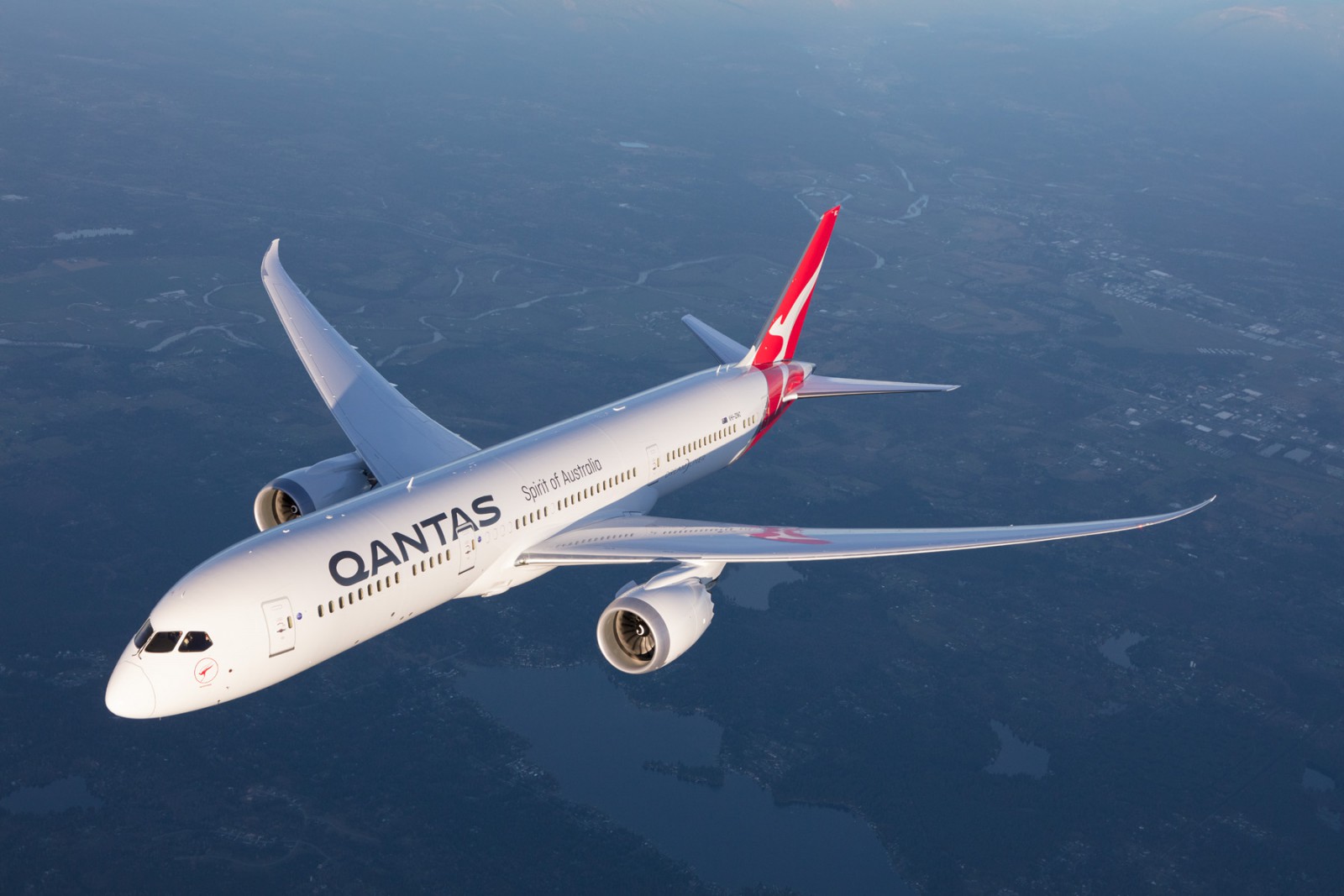Qantas Flight 7879, a factory-fresh Boeing 787-9, is set to make history when it takes off from New York at 9 pm local time on Friday, November 18.
The first of three proving flights for Project Sunrise it’s due to arrive in Sydney at 0710am on Sunday 20th after an expected record breaking 19-hour non-stop flight between New York and Sydney for a commercial jet.
The aircraft registration is VH-ZNI.
According to sources in New York, the 787 will fly over Spokane, Washington to overhead Honolulu before tracking direct to Sydney.
Its expected fuel burn is 92 tons or 4.84 tons an hour, which is the typical fuel burn for a 787-9.
Initially, the flight will be under Cleveland ATC, then transferring to Toronto, Minneapolis, Salt Lake City, Seattle, Oakland Oceanic, Honolulu Control before being handed back to Oakland Oceanic, Nadi, Brisbane and finally Melbourne before being transferred to local Sydney air traffic controllers.
READ: Relief for tall passengers as Air NZ expands economy class.
In Australia, all air traffic other than in the vicinity of major airports is handled by Brisbane and Melbourne ATC Centres.
The planned speed of the 787 will be around Mach .85 or just over 1000km/hr.
Qantas CEO Alan Joyce will be on board along with a small group of staff, university researchers, and media.
READ: Airbus confident its A350-1000 beats the 777X in Sunrise bid.
The flight is the first of three, with two from New York and one from London to Sydney.
All flights involve newly delivered 787s for Qantas and will be used to test how crew and passengers react to 19 to 20-hour flights.
Both Airbus and Boeing are competing for the Qantas “Sunrise” order with the A350-1000 considered the front runner.
But the project may not get off the ground at all if the airline is unable to do a deal with its pilots.
The pilots and the company are still negotiating on productivity concessions demanded by Qantas before year’s end and the union representing flight crews has raised issues about safety and fatigue.
The Australian and International Pilots Association says it the ultra-long-haul flights will test the technical limits of the aircraft and the ability of crews to operate effectively over extended periods.
While AIPA has agreed to participate in data gathering on the flights, it has warned about the limitation of using information from three flights to assess the impact of ultra-long-range flying.
It argues the flights are exploratory in nature because they exceed previously flown flights for which useful data exists and will produce “a limited set of data that will not adequately replicate real-world flying conditions”.
It is particularly concerned that any commercial flights have proven fatigue and safety rules given that pilots need high levels of judgment and decision making throughout the flight.
“The commercial viability of additional ULR services such as the proposed Project Sunrise remains a decision for Qantas,” said AIPA president Mark Sedgwick.
“However should these types of flights be proven as financially viable, then the overriding consideration is the ability to safely operate such services with appropriate considerations being given to the operating crew.”
AIPA safety and technical director Shane Loney called for a scientific long-term study to ensure ultra-long-haul flying was “as safe as we and the airline can make it”.
“Pilots are concerned about being able to get enough quality rest during ULR flights to maintain peak performance and we believe significant caution should be exercised in the initial operations to make sure there are no unintended consequences,” he said.
























